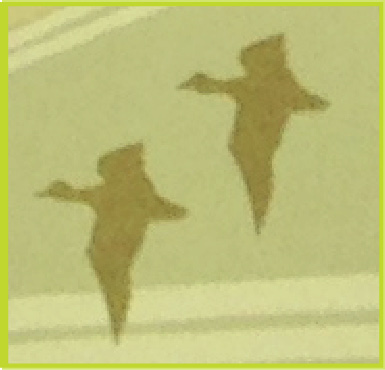[To Introduction to Psychogeography]
 A PSYCHOGEOGRAPHY OF LEWES, 2015
A PSYCHOGEOGRAPHY OF LEWES, 2015
By Margaretta Jolly and Lyn Thomas
Travel writing, like all life writing, is useful, truthful and sometimes beautiful. But in 2015, the Centre for Life History and Life Writing Research at the University of Sussex jumped off track to enjoy the beauty of useless travelling and the art that can be made from it. We took to the town of Lewes for these micro-journeys, because Lewes is on our doorstep (the psychogeographer doesn’t need the exotic), because Lewes and its environs are dreamy, odd and old, if only faintly urban. While the town may be well known for its spectacular Bonfire Night revels (psychogeographical in their own way), we—researchers, writers, filmmakers, artists—got outside the guidebooks to play a little with the town, with truth and ourselves too.
We are now delighted to publish the results of this initiative on REFRAME, the unique multimedia and open access digital publishing platform, also at the University of Sussex, in its School of Media, Film and Music. As a collection of brief essays and photo essays, films, audiorecordings and ‘mappenings’, the psychogeographical works presented here uncover the usually ignored textures and soundscapes of the environment we traversed. Beginning with Adam Whitehall’s inverse illuminations of the notorious Lewes Bonfire Night (here and here), we return to the everyday textures of the town in Gabby Dempster‘s film of Lewes pavements, voices and footsteps and Adam Whitehall’s film of a bus journey to Seaford, catching the flint, brick, stone and tiled surfaces of local buildings. Wilma de Jong’s film gives a ground level view of the chalk downland surrounding the town, along with a social psychogeography of the communities of dog walkers that enjoy it, and of course, the dogs! Michael Guida connects his walk to a photograph of the old cement works, refinding an industrial past behind the chocolate box castle hill. Tanya Shadrick (here and here) and Margaretta Jolly reflect on Lewes as a place of mourning and recovery, interweaving life history with geography as unexpected rite of passage. Amanda Geary also links a walk in Lewes and its sedentary pauses to a significant moment in her life in an elliptical conversation with Father J. at the Bottleneck. Retracing the steps of a walk through Lewes two decades earlier Lyn Thomas rediscovers her past in chance encounters with people, houses, signs and streets. Finally Alexandra Loske pays tribute to perhaps the most psychogeographical of Lewes artists, Peter Messer, in a film that follows his pigments to his studio.
Our psychogeographical explorations of Lewes do indeed seem to have revealed new and intersecting pathways and migrations through the town; reflections on sounds and textures of the built and natural environment; connections between past and present, collective and personal experience; the people and animals who inhabit and traverse the spaces of Lewes and their relationships; the town as memory and physical palimpsest, the memory objects we discard and those we revere and preserve… Different relationships to the town are articulated by the contributors, many of whom are ‘blow-ins’ from elsewhere, while others have deep Lewes roots. However it was our collective walking which took us most and best off course, minds and eyes opened and new possibilities emerging from walking without purpose or plan…..
To the Sitemappening
![]()
